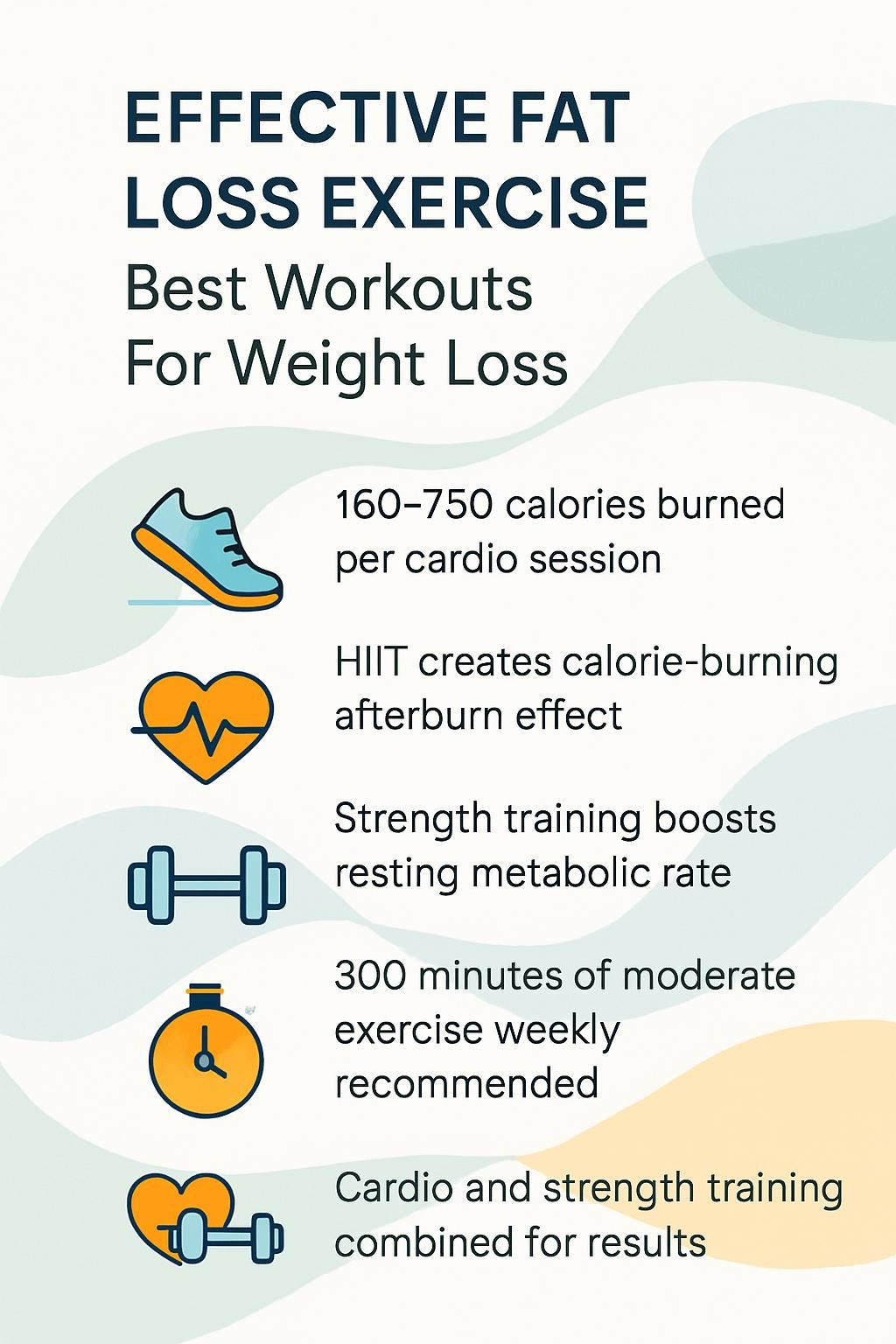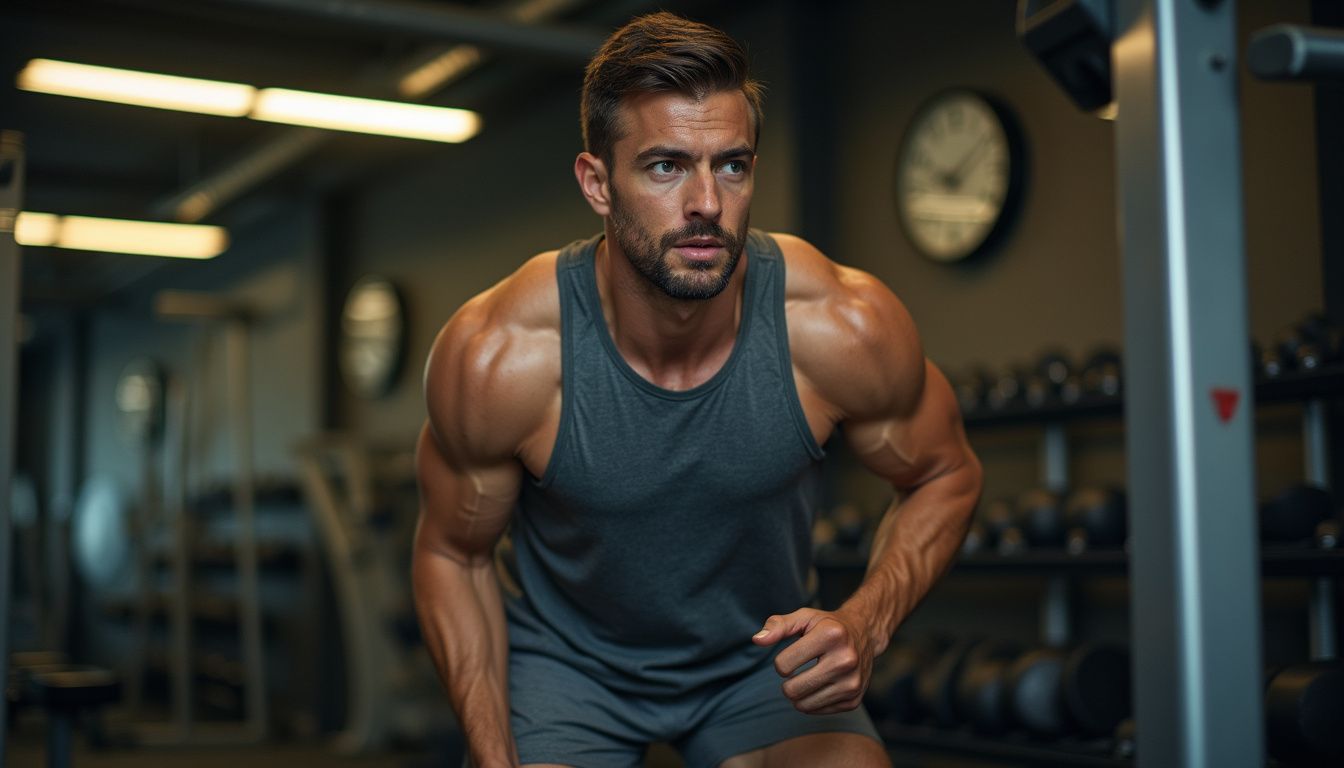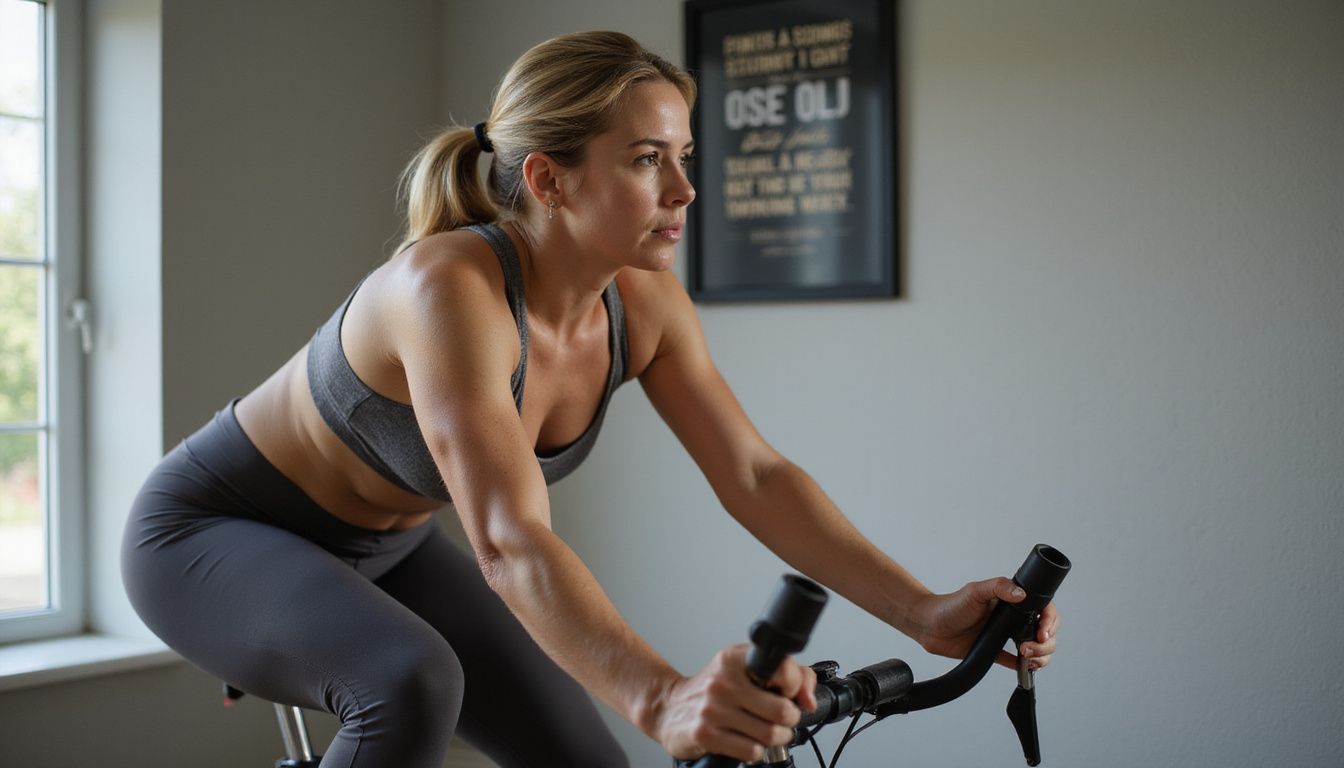Effective Fat Loss Exercise: Best Workouts For Weight Loss
Our Nutrition Assistant AI Suite will transform your body. You will lose fat, get toned, and build muscle. Gain confidence and optimal health.
Stubborn fat can feel discouraging. The good news is that a smart plan works. Pairing exercise for weight loss with balanced eating helps you lose fat faster and protect your health.
This guide shows the best fat-burning exercises, expert-backed tips, and simple ways to build a plan that fits your life. Learn which workouts burn the most calories and how to use them well.
Key Takeaways
- Combining moderate to vigorous exercise with a balanced diet speeds fat loss and improves body composition, supported by research from Dr. Len Kravitz.
- Cardio exercises like running, cycling, swimming, walking, and jumping rope can burn roughly 150 to 750 calories per session, depending on time, intensity, and body weight.
- High-Intensity Interval Training, or HIIT, creates an afterburn effect, so you keep burning calories for hours after the workout.
- Strength training exercises such as squats, deadlifts, push-ups, pull-ups, and bench press build muscle and raise resting metabolism for steady fat loss according to peer-reviewed studies1.
- Consistency matters. Aim for activities you enjoy, at least 300 minutes of moderate exercise per week, and combine cardio with strength training for long-term results.

Why is exercise important for fat loss?

Exercise helps you create a calorie deficit, which is the gap between energy you use and energy you eat. It also increases fat oxidation, the process of using stored fat for fuel. Moderate to vigorous workouts improve these processes and reduce adipose tissue, or body fat.
High-intensity exercise raises afterburn. This is called excess post-exercise oxygen consumption, or EPOC. Your body uses more oxygen to recover, so it keeps burning calories for hours.
Cardio works best when your heart rate is 60 to 90 percent of your max. Cat Kom, an ACE-certified trainer, suggests this range for efficient fat burning and fitness gains.
Strength training builds muscle. More muscle increases your basal metabolic rate, your energy burn at rest. That means you burn more calories each day compared with dieting alone.
Use the “talk test” from the American College of Sports Medicine. If you can talk but not sing, you are at a moderate level. Struggling to speak signals vigorous intensity.
Pick activities you like. Enjoyment increases consistency, and consistency drives healthy, sustainable weight loss.
Moderate-to-vigorous exercise produces higher rates of fat oxidation in both trained and untrained individuals, says Dr. Len Kravitz.
Next up: discover how the best cardiovascular exercises for fat loss work step-by-step.
Best cardiovascular exercises for fat loss
Cardio helps you burn calories in the moment and supports heart health. Different options target large muscle groups and can raise your total calorie burn per workout.
How does running help with fat loss?
Running is one of the best exercises for weight loss because it burns many calories per minute.
- Jogging 4 to 6 mph: about 10.8 calories per minute at 140 pounds, 13.9 at 180 pounds.
- Running faster than 6 mph: about 13.2 calories per minute at 140 pounds, 17 at 180 pounds.
Running also raises metabolism for up to 24 hours after you finish. It targets visceral fat around your abdomen, which lowers risk of heart disease and type 2 diabetes.
Plan 20 to 30 minutes, three or four times per week. Start on softer surfaces if joints feel tender. Add short intervals to build speed while keeping impact under control.
What are the fat-burning benefits of cycling?
Cycling raises your heart rate, improves endurance, and is gentle on joints. A one-hour ride can burn roughly 400 to 750 calories, depending on pace and body weight.
- At 10 mph: about 6.4 calories per minute at 140 pounds, 8.2 at 180 pounds.
It also supports insulin sensitivity, which helps with weight management. Ride a stationary bike for convenience or go outside for variety.
“Regular cycling helps support total body conditioning while lowering disease risk.”
Can swimming aid in effective weight loss?
Swimming is a full-body cardio workout that is easy on joints. A moderate front crawl can burn about 9 calories per minute at 140 pounds and up to 11.6 at 180 pounds.
In a 12-week clinical study of 24 middle-aged women, swimming at least 60 minutes three times per week reduced body fat, improved flexibility, and improved cholesterol and triglycerides.
It supports heart health and may lower risks of stroke, type 2 diabetes, and some cancers. You get high-intensity benefits with less joint stress.
How effective is jumping rope for burning fat?
Jumping rope can burn about 10 to 16 calories per minute, often more than treadmill walking. Ten minutes can match the calorie burn of running an eight-minute mile.
This exercise uses your core, shoulders, arms, and legs. It improves aerobic capacity and works well for short HIIT intervals or steady, longer sets. A basic rope is all you need.
Is walking a good exercise for fat loss?
Walking is accessible, low impact, and effective. A brisk 30-minute walk may add about 150 calories burned to your day. At 140 pounds, that is roughly 7.6 calories per minute; at 180 pounds, about 9.7.
In a 12-week study, sedentary women with overweight or obesity who walked 50 to 70 minutes three times a week lost 1.5 percent body fat and reduced waist size by 1.1 inches, or 2.8 centimeters.
Start with 30 minutes, three or four times weekly. Increase time or add short faster bursts to progress. Morning walks helped me manage stress and made it easier to stay on track.
High-Intensity Interval Training (HIIT) workout examples
HIIT uses short bursts of hard work followed by brief rest. These sessions are time efficient and can produce a strong afterburn, which increases calorie use after you stop.
How do burpees contribute to fat loss?
Burpees drive your heart rate up fast. They train the legs, chest, arms, back, and core at the same time, which increases energy demand.
Add push-ups or squat thrusts to raise intensity. Try sets of 20 to 40 seconds of work with equal rest. Adjust pace to match your fitness level.
Why are mountain climbers effective for weight loss?
Mountain climbers combine cardio with core training. The quick pace spikes your heart rate and keeps many muscles working together.
Use short intervals, such as 30 seconds on and 30 seconds off. This move needs no equipment and fits into any routine at home or the gym.
What are sprint intervals and how do they help fat loss?
Sprint intervals alternate all-out efforts with easy recovery. A full session can last 10 to 20 minutes and still be highly effective for fat loss.
This HIIT approach often burns more calories than steady jogging. It also focuses on belly fat and maintains a strong afterburn. Adjust sprint length and speed to stay safe and avoid injury.
How do plank jacks burn calories?
Plank jacks start in a plank position. You jump your feet out and in, which challenges your core, shoulders, and legs.
The fast movement raises heart rate quickly. Aim for 20 to 40 seconds per round, keeping your hips level to protect your back.
What fat-burning benefits do jumping jacks provide?
Jumping jacks are simple, full-body cardio. They raise your heart rate and recruit large muscle groups, which boosts calorie burn.
Use them in warm-ups, circuits, or HIIT blocks. Light dumbbells can increase the challenge. They also help coordination and endurance.
Strength training exercises for weight loss
Strength training builds muscle mass, which raises your resting metabolic rate. This helps you burn more calories all day, even when sitting or sleeping.
How do squats support fat loss?
Squats work your quads, hamstrings, and glutes, some of the largest muscles in the body. Bigger muscles use more energy during and after training.
Hold a barbell or wear a weighted vest to increase intensity. Progress gradually to build strength, protect joints, and support long-term fat loss.
Why include deadlifts in a weight loss routine?
Deadlifts train your back, glutes, and legs at once. This full-body demand increases calorie burn and leads to a strong afterburn.
As you gain lean muscle, your resting metabolism climbs. Choose a form-focused weight and increase slowly over time.
Can push-ups help reduce body fat?
Push-ups target the chest, triceps, and core. Higher-rep sets raise your heart rate and add a cardio effect to a strength move.
Do them anywhere for consistency. Progress to incline, decline, or close-grip variations to increase challenge and calorie burn.
How do pull-ups aid in fat burning?
Pull-ups make you lift your full body weight. That effort drives calorie use and builds lean muscle in your back, arms, and core.
Use assistance bands if needed or add weight to progress. Strength gains support a higher metabolism for hours after your workout1.
1 Peer-reviewed studies on resistance exercise and post-exercise energy use support these findings (see: “Effect of Resistance Exercise on Postexercise Energy Expenditure: A Randomized Controlled Trial,” Medicine & Science in Sports & Exercise).
What is the role of bench press in weight loss?
The bench press trains the chest, shoulders, and triceps. Heavy sets require high energy, which boosts calorie burn during training and recovery.
Use barbells or dumbbells and apply progressive overload by adding small weights or extra reps each week. Building upper body muscle helps preserve lean mass while you lose body fat.
Full-body exercises that burn fat
Full-body moves engage many muscles at once. This raises your heart rate, increases calorie burn, and improves conditioning.
How do kettlebell swings promote fat loss?
Kettlebell swings combine power and cardio. Each swing trains your hips, glutes, core, and shoulders, which drives a strong calorie burn.
Choose a safe weight and focus on hip drive, not a squat. Use intervals, such as 20 swings, short rest, then repeat for several sets.
What are the fat-burning benefits of box jumps?
Box jumps are a plyometric move, a quick, explosive jump. They challenge your legs and glutes and raise your heart rate in seconds.
The intensity supports afterburn. Use a sturdy box, start low, and step down to reduce impact as you build skill.
How do skater jumps help with weight loss?
Skater jumps move side to side to train balance and power. They work your glutes, quads, and core while keeping the pace high.
Modify the depth or speed to lower impact if your joints feel sore. Add them to circuits for agility and fat loss.
Why is sled push effective for burning fat?
The sled push challenges your legs, core, and upper body at once. Pushing heavy weight increases energy demand and heart rate quickly.
Adjust the load to match your level. This functional move improves strength and conditioning and supports a lasting calorie burn.
How do wall balls contribute to fat loss?
Wall balls pair a deep squat with an overhead throw to a target. You train legs, core, shoulders, and arms in one continuous movement.
Use a medicine ball that lets you keep good form. Add sets to HIIT or circuits to boost endurance and calorie burn.
Alternative workouts effective for fat loss
Fresh activities can reduce stress and improve consistency. These options also support calorie burn and whole-body health.
Can yoga help with fat loss?
Yoga supports weight loss through movement and mindfulness. In a 12-week peer-reviewed study, women with obesity who attended two 90-minute sessions weekly reduced waist size by about 1.5 inches compared with non-participants.
Yoga may lessen stress and curb emotional eating. It builds flexibility, balance, and control, which can help you stay consistent.
How does Pilates support weight loss?
Pilates builds core strength and posture. In one study, 37 middle-aged women did Pilates for 90 minutes, three times per week for eight weeks and reduced waist, stomach, and hip measurements compared with a non-exercising group.
Calorie burn varies by level. At 140 pounds, a 30-minute beginner class can burn about 108 calories, and an advanced class about 168. Stronger core muscles support better movement in daily life.
Is stair climbing effective for burning fat?
Stair climbing is convenient and free. Research suggests climbing just two flights a day can lead to several pounds of weight loss in a year.
It strengthens the lower body, supports heart health, and improves cholesterol. Adjust speed or the number of flights for the right challenge.
How does hiking contribute to fat loss?
Hiking uses large muscle groups and can burn 400 to 700 calories per hour, depending on your weight, terrain, and pace. Hills and uneven ground increase effort and results.
The outdoors often lowers stress and boosts motivation. Choosing more challenging trails or a faster pace increases fat-burning benefits.
Can dancing be an effective fat-burning workout?
Dancing raises your heart rate and works your legs, core, and arms. Styles like Zumba, hip-hop, and ballroom can burn about 300 to 500 calories per hour, based on effort and body weight.
It is fun, social, and requires no special gear. Many people find they stay consistent because classes are enjoyable.
How can I maximize fat loss with exercise?
Use a few proven strategies to get more from every minute you train. If you have a medical condition, talk with a healthcare professional before starting a new program.
Why combine cardio and strength training?
Cardio burns calories during the session. Strength training builds muscle that raises your resting metabolic rate, so you burn more calories all day.
Keep cardio at 60 to 90 percent of your max heart rate for best results. Mixing both methods helps prevent plateaus and supports long-term weight maintenance.
How does incorporating HIIT improve fat loss efficiency?
HIIT burns more calories in less time than steady cardio. Sessions can be 10 to 30 minutes and still deliver strong results.
The afterburn can last up to 24 hours. Rotate moves like sprints, burpees, and jump rope to stay engaged and progress safely.
When and how should I increase workout intensity and duration?
Start with 30 minutes, three to four times weekly. Increase time or intensity gradually to avoid injury and keep improving.
Use the talk test for guidance. For strength, add small amounts of weight or a few reps each week. Track your sessions and watch for steady, controlled progress.
Why is hydration and a balanced diet important for fat loss?
Water supports performance and metabolism. Dehydration leads to fatigue and slows calorie burn.
A balanced diet provides energy and creates a safe calorie deficit. Aim for enough protein to protect muscle while you lose fat. Choose mostly whole foods to reduce cravings and improve recovery.
How does consistency affect fat loss results?
A steady routine leads to lasting results. Plan two to three strength or HIIT sessions each week and add regular cardio.
Track progress and celebrate small wins. Enjoyable workouts make it easier to stay consistent, which is the key to better body composition over time.
Conclusion
Exercise is a powerful tool for effective fat loss. Mix cardio options like swimming, cycling, running, or walking with strength training to raise calorie burn and build muscle.
Short HIIT sessions help you burn more calories in less time. Lower-impact choices like Pilates and yoga support flexibility, stress control, and body composition changes.
Aim for at least 300 minutes of moderate activity each week, and pair your plan with a balanced diet and good hydration. With consistent effort and the best fat-burning exercises, you will see steady progress toward your weight loss goals.
FAQs
1. How does stress affect fat loss and weight management?
Stress, as described in biology, can increase cortisol levels, which may lead to more body fat storage. Studies show that high stress can make it harder to lose weight because it affects how the body uses energy and stores fat.
2. Is swimming a good workout for effective fat loss?
Swimming is a full-body sport that burns many calories and helps improve heart health. Research shows swimming can reduce body fat while building muscle, making it one of the best workouts for weight loss.
3. What is the effect of pilates exercise on body composition?
Pilates exercise improves muscle tone and flexibility while supporting healthy posture. Evidence suggests regular pilates sessions can lower body fat percentage and increase lean muscle mass, leading to better overall body composition.
4. Can combining swimming and pilates help with weight loss?
Combining swimming with pilates exercise offers both aerobic and strength benefits. This mix helps burn calories, reduce stress, and improve body composition more effectively than doing either exercise alone.
Summary: Stress impacts fat loss by raising cortisol; swimming burns calories; pilates improves muscle tone; combining both supports effective weight loss with positive changes in body composition.







